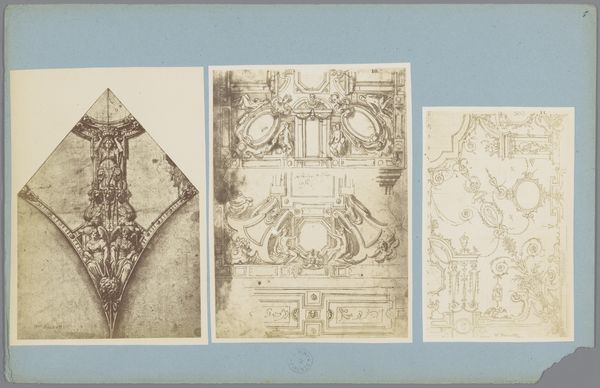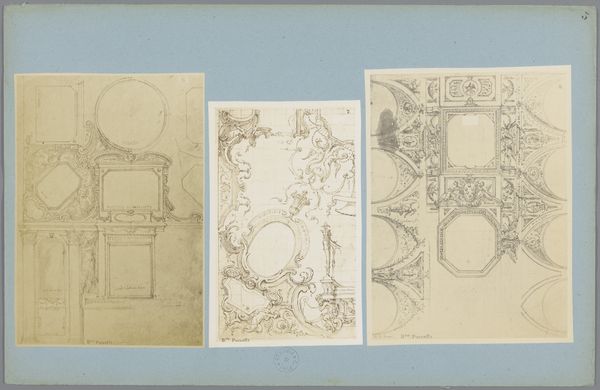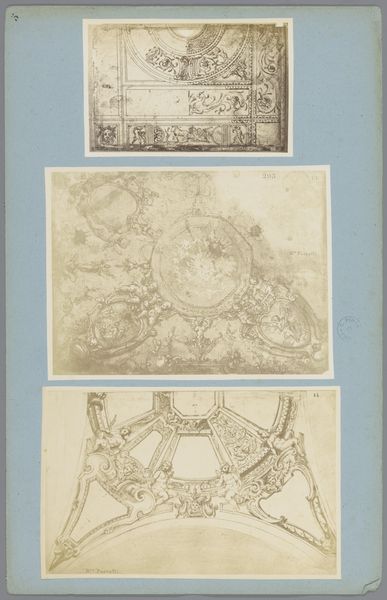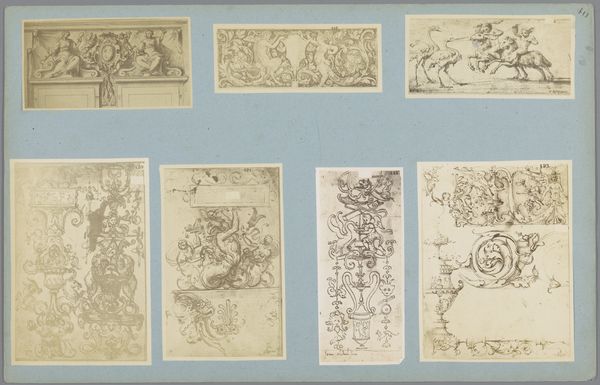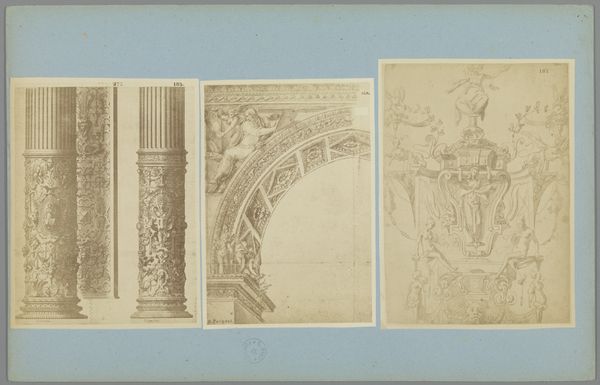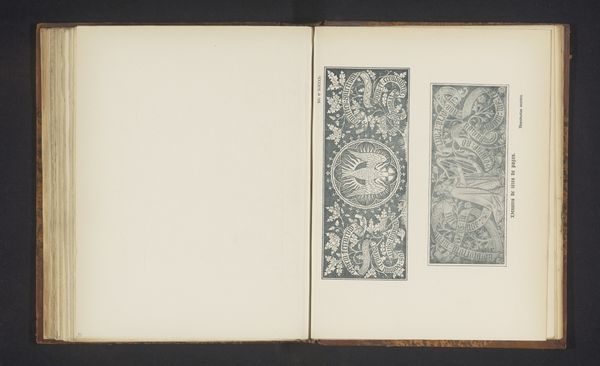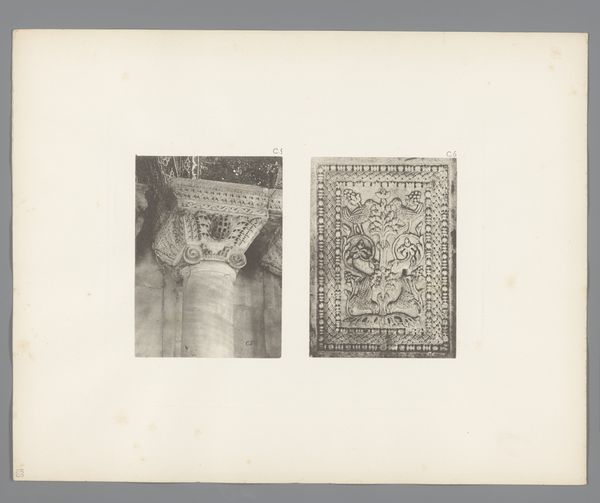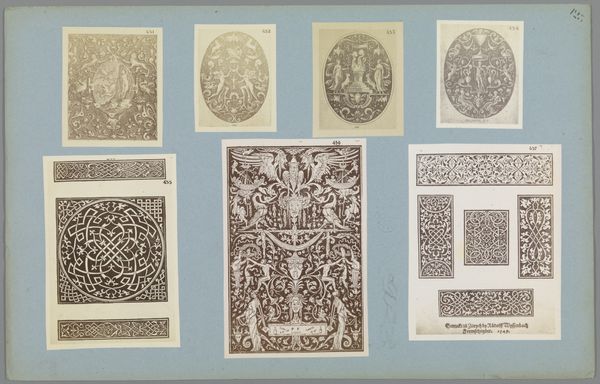
Drie fotoreproducties van tekeningen van plafonddecoraties door Bernardino Poccetti c. 1875 - 1900
0:00
0:00
drawing, print, etching, paper, engraving, architecture
#
drawing
# print
#
etching
#
paper
#
coloured pencil
#
history-painting
#
engraving
#
architecture
Dimensions: height 320 mm, width 495 mm
Copyright: Rijks Museum: Open Domain
Editor: Here we have "Drie fotoreproducties van tekeningen van plafonddecoraties door Bernardino Poccetti," created sometime between 1875 and 1900. They’re prints – engravings, etchings, or something similar, all on paper. It's a very intricate, almost overwhelming set of designs. What strikes you when you look at these? Curator: I'm immediately drawn to the purpose these prints served. They weren’t meant as artworks in themselves, but rather as documentation, or even promotion, of Poccetti’s ceiling decorations. Consider the context of art patronage in that period. Who was commissioning these elaborate ceilings? Were they expressions of wealth, power, religious devotion, or something else entirely? Editor: So, these prints acted as a record of artistic accomplishment within a specific social structure? Almost like promotional material? Curator: Exactly. And thinking about the market for these images – were they primarily intended for other artists, potential patrons, or perhaps architectural historians? The reproductive nature of printmaking democratizes the image, but simultaneously reinforces a hierarchical structure where grand ceiling frescoes were exclusive to the elite. Editor: That's fascinating. It changes how I see them, not just as pretty designs but as objects embedded in a web of social and economic relations. So, were Poccetti's frescoes typically commissioned for religious buildings, or more often for private residences during this time? Curator: Good question. Looking at the style, one could surmise it served equally private and public programs, likely playing into whatever political agenda the patrons were pushing for. That could range from assertions of piety to shows of civic engagement and familial dynasty-building. Editor: I never thought about the politics of ceiling decorations before! It shows how art reflects and shapes social structures. Thanks for shedding light on that. Curator: My pleasure. It’s precisely this interplay between artistic creation, its reproduction, and its societal role that makes art history so compelling.
Comments
No comments
Be the first to comment and join the conversation on the ultimate creative platform.

